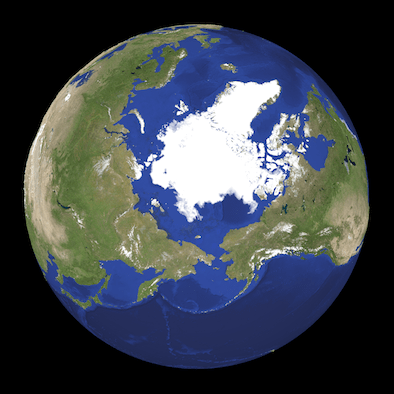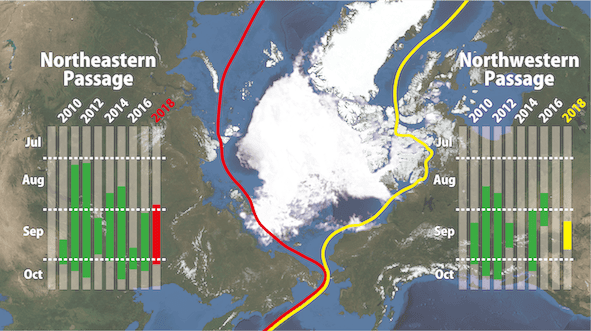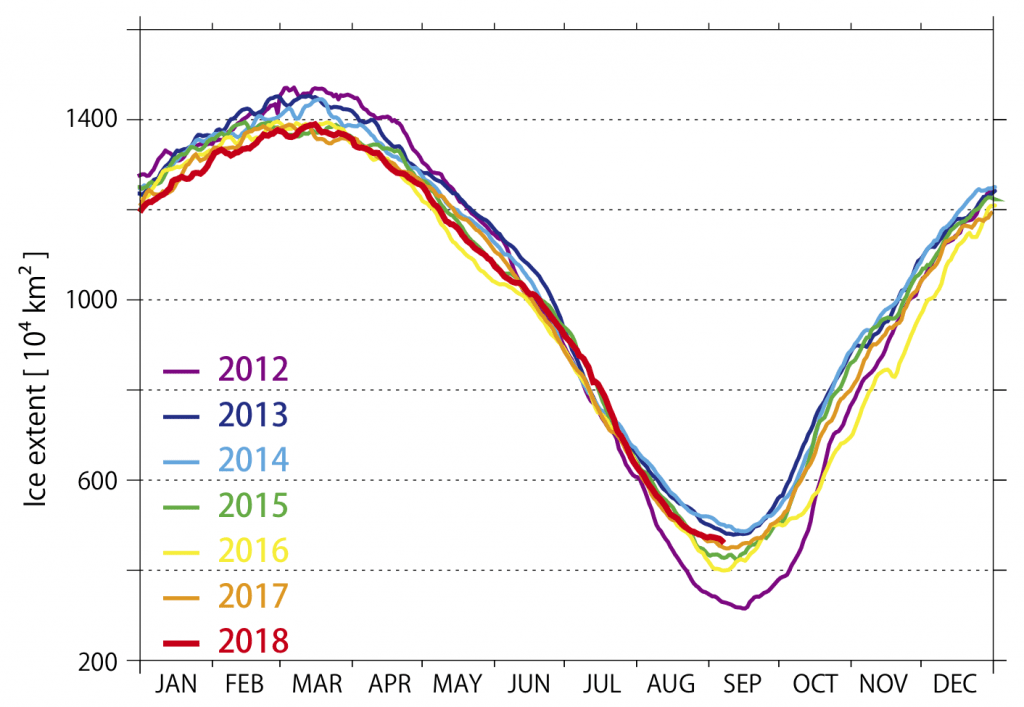News & Press Release
Weathernews releases “Arctic Ocean Sea Ice Trends 2018”
Northeastern Passage Opened in Late August, Northwestern Passage expected to open in mid-September
Shipping >Weathernews Inc. (Head Office: Mihama-ku, Chiba-shi; CEO: Chihito Kusabiraki) Global Ice Center has announced the prediction of sea ice trends in the Arctic Ocean for 2018. This summer, the Northwestern Passage (Canadian side) is likely to open in mid-September, whereas Northeastern Passage of the Arctic Ocean (Russian side) has already opened in late August. The area of ice extent is melting at about the average rate recorded since 2010, and the minimum ice area is expected to be 4.4 million square kilometers, about the same as last year and the 6th lowest since records began. This year, the transport of liquefied natural gas produced in the Arctic Ocean by specialized ships is gaining momentum, and regular usage of the Arctic Ocean passages is advancing. Weathernews is combining observational results from our own microsatellite “WNISAT-1R” with existing satellite images to more accurately identify the sea ice distribution in the Arctic Ocean, an area with little observational data available, and this enables us to strengthen our support for safe shipping operations.
Arctic Ocean Sea Ice Trends 2018
In an average year, the area of ice extent in the Arctic Ocean reaches a yearly maximum in the winter months of February to March, and the yearly minimum is recorded in the summer period of September. During the winter months of 2018, the area of ice extent in the yearly maximum period was roughly the same size as in winter 2017, when the ice extent was the smallest ever recorded. The subsequent pace of ice melting has been similar to average years, and by mid-August the area of ice extent in the Arctic Ocean is roughly 6.3 million square kilometers. Melting will continue until mid-September, and it is expected that the ice extent will decrease to roughly 4.4 million square kilometers in the minimum period, similar to the trend over the winter-to-summer period of 2017.

Currently, as regards the Northeastern Passage on the Russian side, ice melt progressed in the Laptev Sea in the heart of the Passage area. However, as much ice remained in the East Siberian Sea located to the east, Weathernews forecast the opening to occur in late August. The ice is expected to continue to melt through mid-September when it is forecast to be at its smallest extent.

Also, as regards the Northwestern Passage on the Canadian side, the melting of sea ice in the Beaufort Sea to the north of Alaska is progressing, but much sea ice still remains in the Canadian Archipelago. As it will require time for this ice to melt, the period of opening is likely to be mid-September.
*Definition of “opening”: the situation where, judging from satellite observational data, the full shipping route is passable without entering areas of sea ice.


Minimum areas of Arctic Ocean sea ice in the summer period (in ascending order)
Area of Arctic Ocean ice extent (yearly minimum value) *Recorded since 1979, 2018 is a prediction | ||
1st | 3.18 million km2 | (2012) |
2nd | 4.02 million km2 | (2016) |
3rd | 4.07 million km2 | (2007) |
4th | 4.26 million km2 | (2015) |
5th | 4.27 million km2 | (2011) |
6th | 4.40 million km2 | (2018 prediction) |
7th | 4.47 million km2 | (2017) |